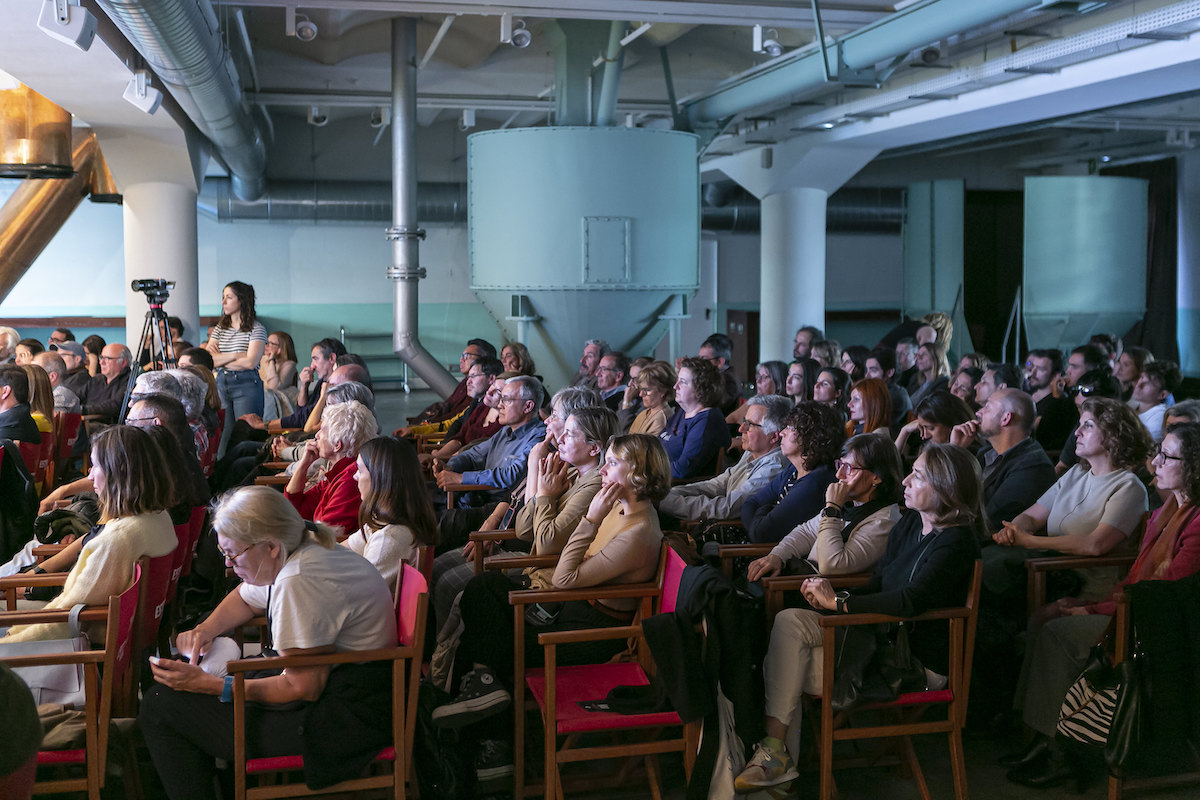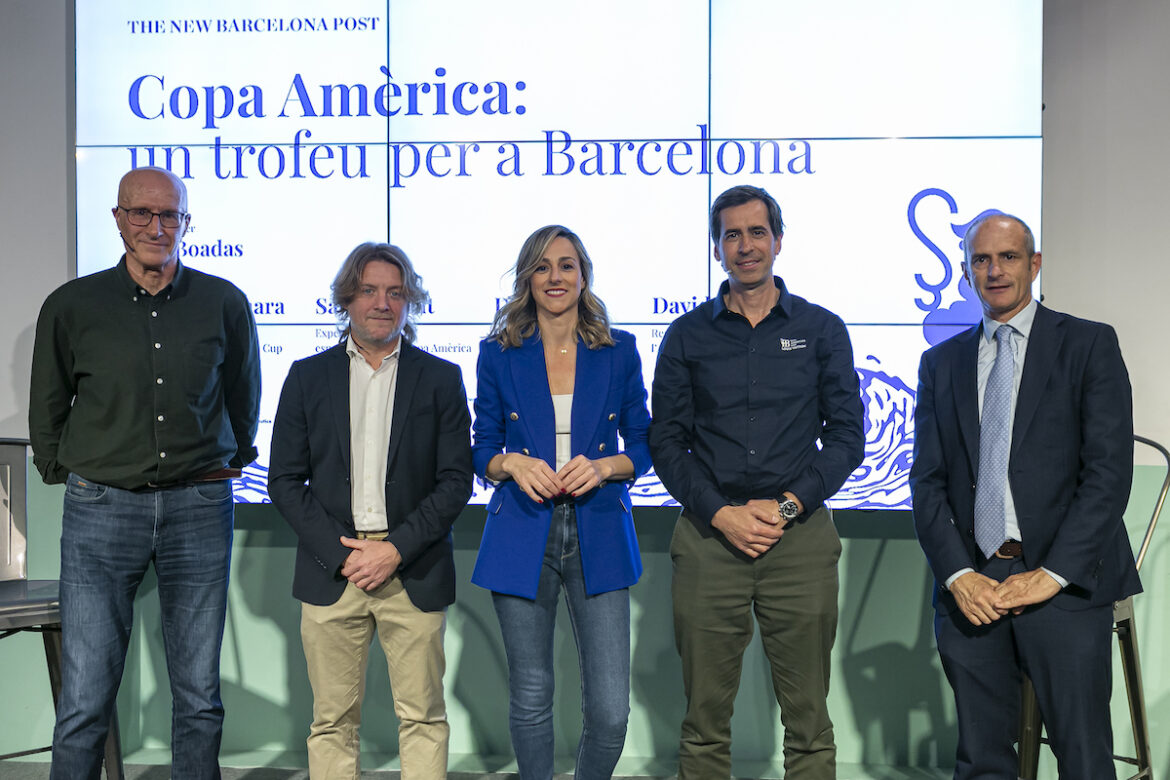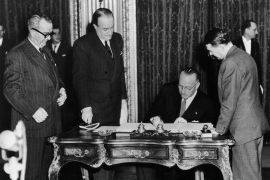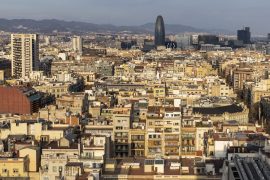A sports event that transcends the field of sport and is set to leave its mark on the Catalan capital. This is how the Louis Vuitton 37th America’s Cup is conceived by its corporate director, Albert Vilumara; the Barcelona Sports Councillor, David Escudé; the Port of Barcelona’s America’s Cup coordinator, David Pino, and the expert communicator in the competition, Santi Serrat. All of them took part in the first session of the cycle this Wednesday. Everything you want to know about the America’s Cuppowered by The New Barcelona Post with the sponsorship of the Port of Barcelona, the Barcelona City Council, Estrella Damm and the Fundació Barcelona Capital Náutica. The event, which aims to bring the competition closer to the public, also has the participation of America’s Cup Event Barcelona (ACE) and the collaboration of Giny and Must Media Group.
In the event, moderated by journalist Ana Boadas at the Antigua Fábrica Estrella Dammall of them agreed in predicting that the competition “will be a success” and Councilman Escudé went further by making a promise: “We promise to make history, in the good sense of the word”, proclaimed 141 days before the start of the competition. The America’s Cup will turn Barcelona into a “big blue pavilion”, in the same spirit that inspired the 1992 Olympic Games: the city does not adapt to the event, but the event adapts to the idiosyncrasy and character of the city, according to the councilman.
Precisely this spirit is one of the intangible elements that the America’s Cup wants to bring out, with a legacy that contributes to “recovering a sense of pride in the ability to organize major events,” according to Vilumara. ACE’s corporate director is clear about the element that will determine the success of the sporting event: “Let’s get the citizens to go down to the sea and experience the America’s Cup”. To this end, they will avoid views that see it as an elitist event, and will open it “to as many people as possible”. Thus, they foresee free access to the beaches and docks near the race course, which will be located between the Hotel W and the Hotel Arts, tilting depending on the wind. “The idea is to be able to watch it from the beach, also with the support of screens,” he explained.
The America’s Cup will have an economic impact in the Catalan capital of more than 1,200 million euros.
Serrat has gone further, and considers that “the success must be that the people of Barcelona understand what it means for an event of this type to be in the city, also as a matter of image, prestige and projection”. And the fact is that the event will represent a worldwide showcase for Barcelona, which was selected among 60 cities by the New Zealand team, which has the rights to organize this edition as the defending champion. The characteristics of Barcelona’s coastline and infrastructure were key to the choice, as was the city’s “capacity to host an event like this,” according to Vilumara.
The presentation of the candidacy and the organization once it was chosen was hectic: In five months, the spaces for the teams were prepared, which were finally located in the Port Vell in a moment of “illumination”, according to Pino, also director of this port. In a process with “a lot of problems but a lot of help”, the Port Vell has been hosting the teams since last summer. And they are not exactly small teams: they bring together between 100 and 150 people, including athletes, engineers, trainers and other profiles.
Objective: to increase television audience by 50%.
The activity of these teams also affect on the economic impact that the competition will generate in the Catalan capital: it will be around 1,200 million euros, calculated on the basis of the expected spending by teams, visitors and participants, according to data from a study by the Universitat Pompeu Fabra (UPF). This was stated by Vilumara, who emphasized the importance of the television broadcasting of the sporting event, which is the main expense for the organization. It will include the use of drones, helicopters and technologies such as augmented reality to “draw virtual races”.. With one goal: to increase by 50% the number of viewers of the last edition, which reached 941 million people.
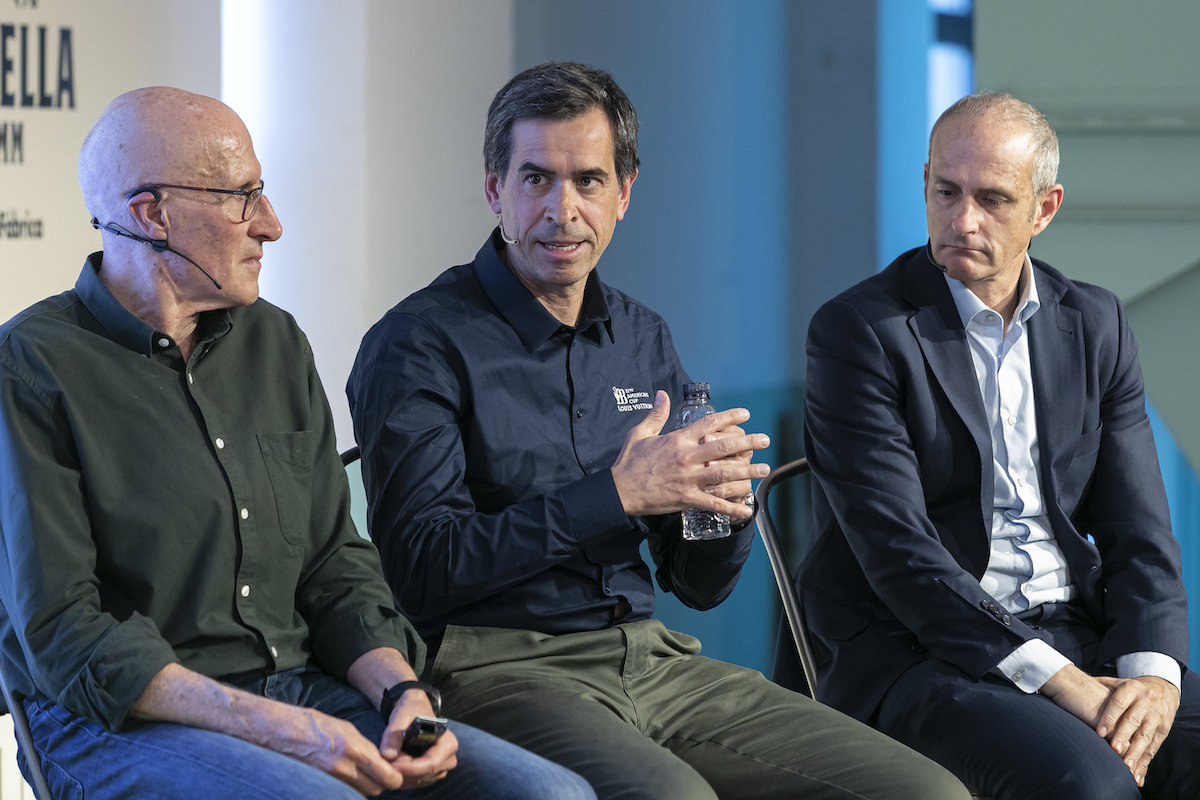
A transforming legacy
The legacy of the America’s Cup is beginning to be palpable in the Catalan capital and its surroundings, with transformations such as that of the Olympic Port and the Port Vell. As detailed by its director, the multiple refurbishments that are progressing in the Port Vell add up more than 120 million euros, with 70 million coming from the private sector.such as the refurbishment of the Maremagnum and the recovery of the old Imax to hostthe America’s Cup Experience. “Everyone signs up and everyone joins in” on the America’s Cup wave, and Port Vell has accelerated transformations that include the launch of the new nautical bus and the opening of the Moll de Pescadors.
But the competition aims to leave a trail that goes beyond the urban reforms, and that includes consolidating the women’s category of the competition, thePuig Women’s America’s Cupwhich is making its debut for the first time in history.
In addition,the attraction that the regatta will exert on the sea will serve to promote nautical activities and to grow the love of sailing, something that will be materialised with various initiatives, including the promotion of the first Catalan women’s foiling team. All in the interest of bringing water sports and their practice to a citizenry that looks more and more to the sea.
The schooner America and a silver jug
The first session of the series organized by The New Barcelona Post has started with a journey through the 173 years of history of the regatta, captained by Santi Serrat. The competition, currently considered one of the most complex sporting challenges in the world, originated in 1851, when the New York Yacht Club received an invitation from the World’s Fair Racing Commission, which was to be held in London, to participate in a regatta at Cowes, in the south of England. The New Yorkers moved their vessel there, the schooner called the America which now gives its name to the emblematic regatta. This boat was the first in history to be expressly designed “to win a competition,” Serrat emphasized. The competitors raced around the Isle of Wight, in a race that was won by the crew of the America. As a prize, a silver decanter valued at one hundred guineas, and another that they did not consider at the time: naming what has become the most important sailing trophy in the world.
The victory of the America, whose design broke with the traditional rounded shape of the boats, opened an early era of the competition in which the races were contested on corrected time; that is, corrective coefficients were applied, so that the boat that came first did not necessarily win. That changed in 1930, when they became real time: here, the first one won, so that “the races became more exciting, which contributed to their popularization”.
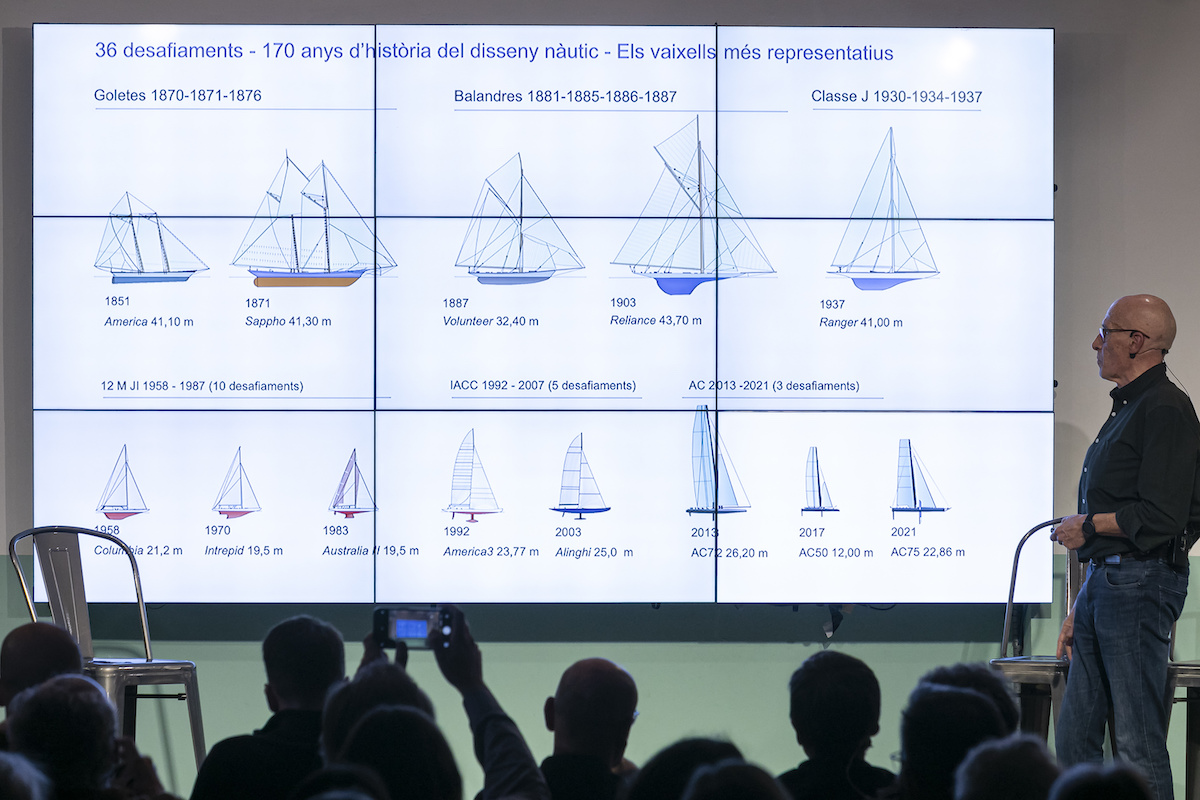
As Serrat has narrated, another stage began in 1958, when hydrodynamics and aerodynamics began to be fully applied in the design of boats. It was in this phase that the America’s Cup became popular and began to expand internationally. Some four decades later, in 1992, the fourth stage of the competition was opened, marked by technology and by boats built with composites and carbon fiber. These evolutions led to the need for large budgets and the massive entry of sponsors into the regatta. The importance of technology was gaining weight and specialization, to the point that teams of designers were required, replacing individual designers.
The hydrofoils that the teams from defending champions New Zealand were working with marked the next stage: the flying boats. “The foil lifts the boat out of the water and allows it to fly”, illustrated Serrat. The first of these ships were the AC72s, which “each time they capsized required between three or four million euros for the damage that was generated”. They have been evolving until the boats that will sail the Mediterranean before Barcelona, the AC75, in an evolution that Serrat has exposed comparing sizes and designs of the ships from the origin of the competition until today.
The regatta can be followed from the Barcelona coastline with free access, or by means of a television broadcast using drones, helicopters and technologies such as augmented reality.
The design of the flying boats requires a large technological investment and a diversification of design teams, as well as navigation and tactics that break with all of the above. The evolution, complexity and media attraction of the sporting event have made it one of the three most important in the world in terms of number of spectators.alongside the Olympic Games and the Football World Cup. With the celebration of the America’s Cup, Barcelona will become the first city to host all three competitions. Thus, “Barcelona is once again positioning itself as a leading city in the organization of sporting events,” said Vilumara.
The session was the first the first of the cycle promoted by The New Barcelona Post with the purpose of bringing the America’s Cup closer to the citizens. The cycle will be completed with three more sessions, all before the competition starts in August. They will take place on May 15, June 19 and July 17, and will focus respectively on how the competition works and the rules of the game; on understanding the reasons why the America’s Cup is considered a benchmark in innovation and sustainability; and on discussing the legacy that the event will leave on the city. All this in a context in which the emblematic competition is finalizing preparations, ranging from the tuning of the boats to the study of the movement of the waves in Barcelona, as Serrat explained: “The moment of truth is approaching”.
